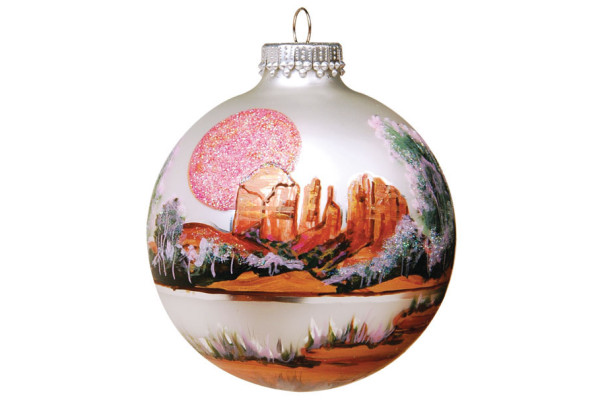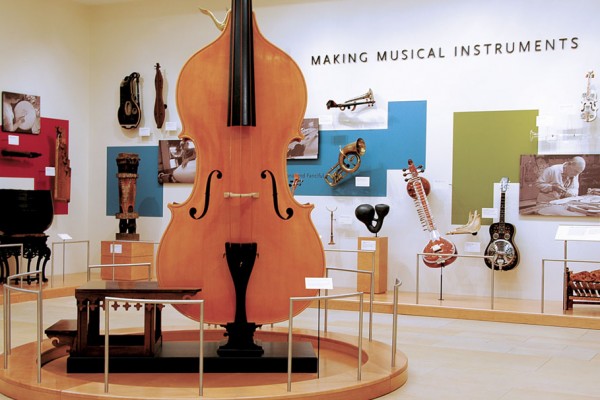Continued (page 10 of 13)
The role of Carrie, played by Rylee Fansler, is based on you. What was it like watching her re-enact your story?
She became an actor, a character, after a while, but the thing that was most difficult was recreating the murder [at the beginning of the film]. I never told anybody about it, not even my family. To carry that around as a child was very, very difficult. I was very nervous creating the murder over again. I worried for [Rylee] so much. It was the very last shot on the very last night. If I had started with that it would have frightened the hell out of her.
When did the film premiere? The story is almost overwhelmingly tragic. What has been reaction from audiences?
It premiered in Philadelphia a few months ago. It was well received. We’re going to St. Louis next weekend, and we’re going back to Boonville. The whole town is coming in black tie. We’ll all get a chance to go back and put it to bed. The story is very disarming in the beginning and as the picture goes by you’re riveted. People lean forward, and they don’t move. What I’ve found interesting, when the movie is over nobody [leaves]. They listen to the song by Bill Medley and nobody moves. They are thinking. You start to question your own life and how you handle things. There is a topic in the movie that nobody talks about.
The weather plays a big role in this film. The rain is one of the main characters.
It was 120 degrees down there so we had to create it. I carried two trucks from Los Angeles that could hold thousands of gallons, and we got it out of the river. It rained whenever we needed it. It became oppressive, didn’t it?
You’ve had a tremendously successful career with mainstream Hollywood movies and television shows, but what is your opinion of the importance of independent films?
I’m a big fan of documentaries because they tell it like it is. My film The Healing documented Vietnam from a female point of view. Indies give you a slice of life documenting the times. A lot of the [major movie studios] that used to do it, like Meet John Doe, aren’t making films like that. They are making Transformers. It stifles the writing and the creativity. That’s why I said I was going to write [this film]. I wanted to show 1951. Take a good look at it. People treated each other a lot nicer. The community cared about each other. I don’t see that in films, which is why I put it in mine. The actors became like the community they were portraying, and I hope people notice that.
Have you been to Sedona in the past?
Once, and I loved it! And I can’t wait to come back for the festival.
Stephanie Argy and Alec Boehm: The Red Machine
Stephanie Argy and Alec Boehm began their writing and directing careers with a series of critically acclaimed short films, Gandhi at Bat and Scene. Both Stephanie and Alec grew up in Los Angeles; Stephanie earned her master’s in journalism and has written for Variety and The Hollywood Reporter while Alec got his start in the camera department working on films such a The Passion of the Christ and The Haunted Mansion. The duo wrote, produced and directed The Red Machine, a film about a thief and a spy set in World War II. Stephanie and Alec spoke to Sedona Monthly about making their first feature film.
Sedona Monthly: Tell us about the evolution of The Red Machine. How did the story come about? When did you first start writing and when was it finished?
Stephanie Argy: We’ve always really been fascinated with capers and spy movies. We came across a book that had a mention of these black-bag operations – it was all about code breaking – and so we thought it would be a cool movie. This was in 2000. We didn’t do much with it until we made a short film called Gandhi at the Bat, which is also set in the 1930s. Among the actors who showed up to the casting call was Lee Perkins, who plays F. Ellis Coburn, and Donal Thoms-Cappello, who plays Eddie Doyle. While working with them on the short, we realized they were great and decided they could be our spy and our thief. From there we started writing it, and it turned into the movie. There were certain aspects that were shaped because we knew it would be those two actors.
How long did it take to film?
SA: Twenty-seven shooting days. We shot at the end of 2006. It took us until this year to do all of our post [production] because we did it all ourselves. We finally finished [in 2009], and we debuted at the Mill Valley Film Festival.
We’d like to focus on the process of directing a movie. This is the third film you’ve directed together, correct? What’s the most difficult part of the directing process?
SA: We directed together quite a lot, but there’s three out in the world.
Alec Boehm: It’s our first narrative feature. We wondered if doing short films was good preparation for a feature, and in a way it was, but in another way we had no idea what we were getting into. You think a 90-minute film would only be nine times as hard as a 10-minute film, but that’s not the case. It was also ten times more fun.
SA: It’s a lot more complex to do a feature. Every decision has so many more repercussions. Everything that you’re doing becomes more complicated.
AB: Once you get on the set, your big job is problem solving. Before you get there, you’ve worked out what you’re going to do.
SA: The difference between a short and a feature, for me, is when you’re doing a short it happens so fast that everything has to be ready to go before you start. The big shift was understanding that the start of the movie might be two days away, but the finish is six weeks down the road. Not every single thing had to be done [at the beginning].
What is it like to direct a movie with someone else?
SA: There’s one commonality that crosses all we do: We have a slightly different perspective on the work. That saves us. I tend to take a broad view of things. I’ll see the arc of the movie or the entirety of a scene. That works whether we are writing or directing or editing. Alec has this incredible eye for details. I set the scene, and he focuses in, spotting the minuet expressions on an actor’s face. He’ll know exactly where to trim a frame.
AB: It works out well. Ideally I suppose that it would just be one super-person, but we share it.



